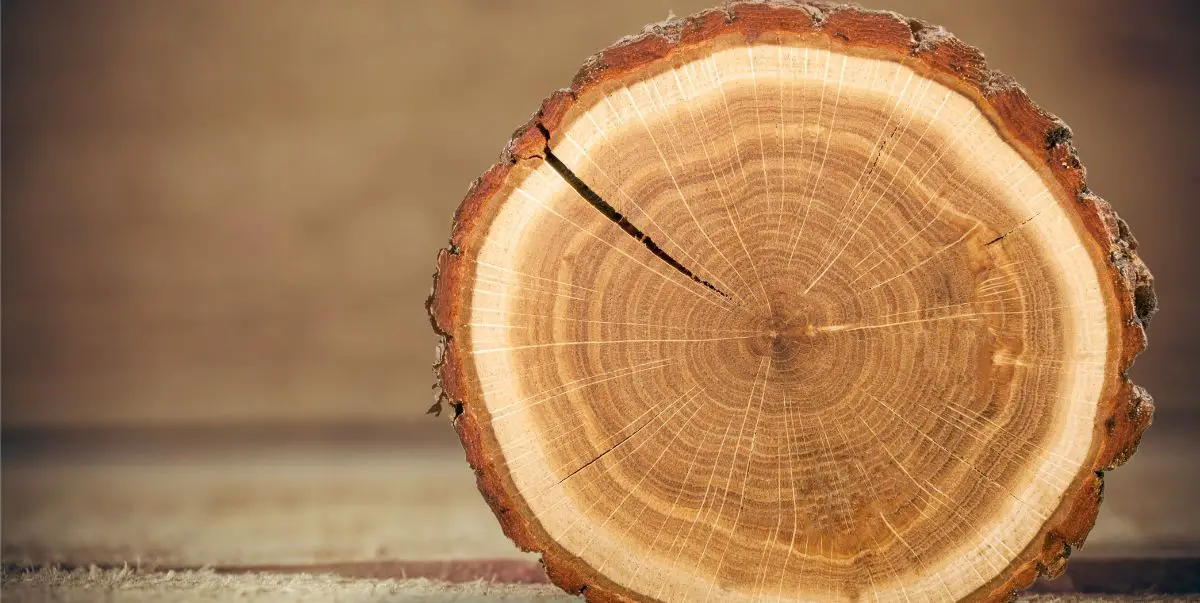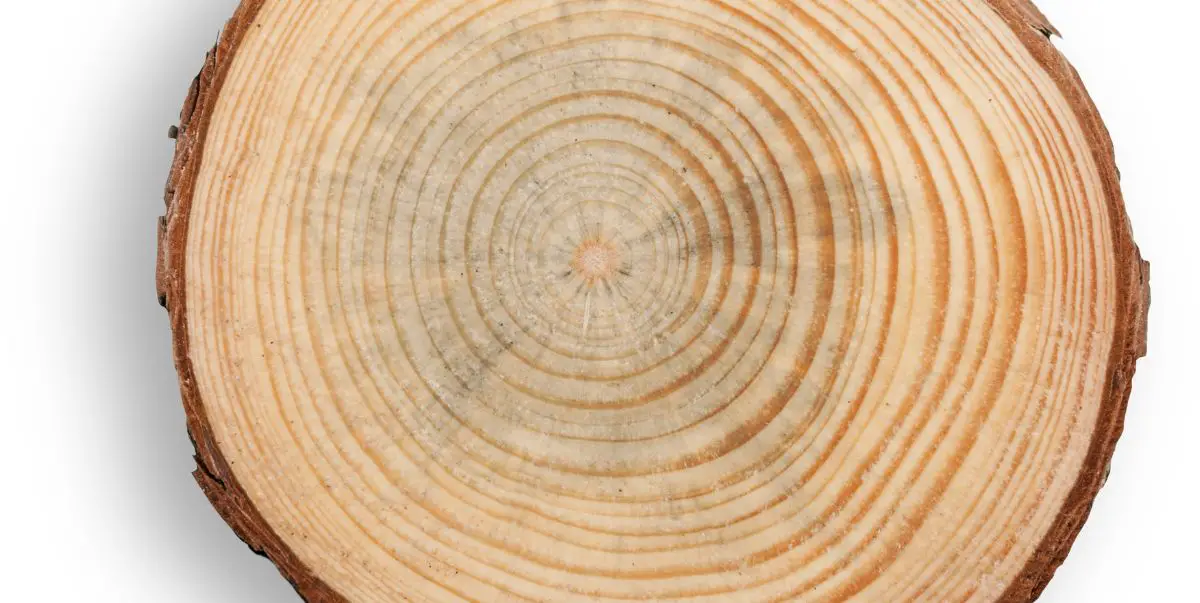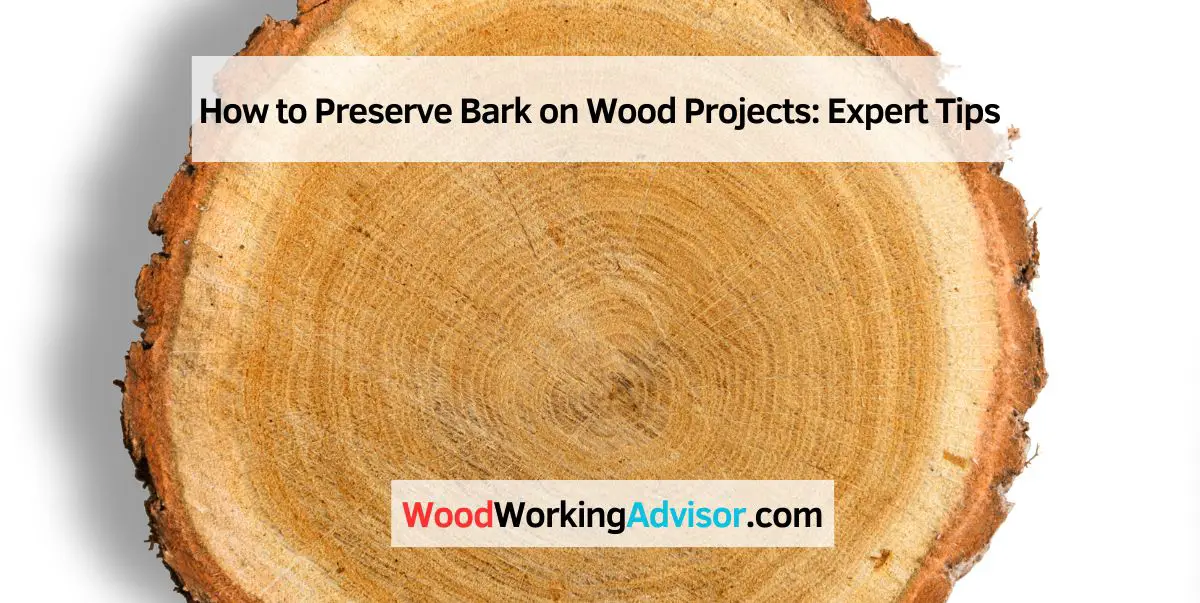To keep the bark on wood projects, seal the wood with a clear finish or epoxy resin that will prevent the bark from peeling or falling off. Applying a layer of wood glue before sealing can also help maintain the bark’s adhesion.
Overview: Keeping the bark on wood projects can enhance the natural aesthetic appeal. Whether you are working on a fence, furniture, or craft project, preserving the bark can add a touch of rustic charm. However, the bark tends to loosen or detach over time due to various factors such as moisture, handling, or environmental conditions.
To ensure the bark remains intact, appropriate steps must be taken during the finishing process. We will explore effective techniques to keep the bark on wood projects, allowing you to create long-lasting and visually appealing pieces.
Choosing The Right Wood
When it comes to woodcraft projects, one of the essential factors to consider is selecting the right wood. The choice of wood species plays a crucial role in determining how well the bark will adhere to your projects. Various wood species have different characteristics that can affect the durability and longevity of the bark.
Consider The Wood Species
The first step in keeping bark intact on your wood projects is to evaluate and choose the appropriate wood species. Different types of wood have varying levels of bark adhesion. Some species, such as pine and cedar, have a natural tendency to retain their bark and are ideal choices for projects where you want to preserve the rustic and organic look.
Birch and oak, on the other hand, may require some extra effort to keep the bark intact. These woods have a smoother texture, making it easier for the bark to separate from the surface. If you prefer to work with these species, you can still keep the bark on by following a few additional precautions.
Evaluate The Bark Condition
Before embarking on your woodcraft project, take a close look at the condition of the bark. Bark that is loose or already peeling off is less likely to stay in place. Choose pieces of wood with firmly attached bark for better adhesion.
If you find a piece of wood with bark that is partially detached, don’t worry. You can still salvage it by gently removing the loose portions and reinforcing it with a suitable adhesive. This will help ensure that the remaining bark stays firmly adhered to the wood surface.
Keep in mind that bark that is brittle or flaky may require additional treatment. Applying a sealant or a wood stabilizer can help preserve the bark’s structure and prevent further deterioration over time.
In summary, selecting the right wood species and evaluating the condition of the bark are essential steps in keeping the bark intact on your wood projects. By choosing a wood species with good bark adhesion and taking the necessary precautions, you can create stunning and long-lasting woodcrafts that maintain their natural beauty.
Preparing The Bark
To keep bark attached to wood projects, carefully prepare the bark by removing loose fragments and applying a sealant to the edges. This process will help preserve the bark and prevent it from detaching over time. Using clear epoxy or wood glue can also help keep the bark secure and enhance the natural aesthetic of the wood project.
Cleaning The Bark Surface
To ensure the bark stays intact on your wood projects, proper cleaning is essential. Begin by carefully removing any loose debris and dirt from the bark surface using a soft brush or cloth. Gently brush in the direction of the bark’s natural texture, taking care not to apply too much pressure. This step helps to create a clean and smooth surface for the following preparations.
Next, inspect the bark for any signs of pests or mold. If you notice any infestation, it’s crucial to address the issue before proceeding. Treat the affected area with an appropriate pesticide or mold remover, following the instructions carefully. Taking these preventive measures helps to protect the bark and the longevity of your wood project.
Applying A Sealer
Applying a sealer is a vital step in preserving the bark on your wood projects. A sealer acts as a protective barrier against moisture, insects, and UV rays, enhancing the durability of the bark. Before proceeding, ensure the bark surface is completely clean and dry.
When it comes to choosing a sealer, opt for a product specifically designed for wood and bark preservation. Sealers with a clear finish are ideal as they highlight the natural beauty of the bark. You can find a variety of sealers available, such as polyurethane, epoxy, or wood sealer. Select the one that suits your project and follow the manufacturer’s instructions for application.
Before applying the sealer, use masking tape or painter’s tape to protect any adjacent surfaces or areas you don’t want the sealer to reach. This step ensures a neat and clean finish.
When applying the sealer, use a brush or a sponge, and follow the grain of the wood. Apply an even coat, starting from the top and working your way downwards. Allow the sealer to dry completely according to the manufacturer’s instructions before applying any additional coats if necessary.

Preservation Techniques
If you want to ensure that the bark on your wood projects stays intact and beautiful for years to come, there are a few preservation techniques that can help. Proper preservation techniques not only maintain the aesthetics of your wood projects but also protect them from environmental damage.
Using Epoxy Resin
Epoxy resin is a popular choice for preserving bark on wood projects. It provides a durable protective layer that seals and preserves the surface, preventing the bark from peeling or chipping. To apply epoxy resin, follow these steps:
- Clean the wood surface thoroughly to remove any dirt or debris.
- Prepare the epoxy resin according to the manufacturer’s instructions.
- Apply a thin, even coat of epoxy resin to the wood surface, ensuring full coverage of the bark.
- Allow the resin to cure completely before handling the wood project.
Applying Wood Stabilizer
Wood stabilizers are specifically designed to penetrate and strengthen the fibers of the wood, preventing the bark from loosening or falling off. Here’s how you can apply a wood stabilizer to your wood projects:
- Ensure the wood surface is clean and dry before applying the stabilizer.
- Use a brush to apply the stabilizer evenly over the entire wood surface, including the bark.
- Allow the stabilizer to fully penetrate the wood and dry according to the manufacturer’s guidelines.
- Apply a second coat if necessary for added protection.
Finishing Touches
After all the hard work of constructing your wood project and ensuring the bark remains intact, it’s time to move on to the finishing touches. These final steps will not only enhance the overall appearance of your project but also help preserve the bark for years to come.
Sanding And Smoothing
Before applying any finishes, it is essential to sand and smooth the wood surface. This step not only removes any rough edges or splinters but also helps the protective finish adhere better. Use a medium-grit sandpaper to sand the surface gently, working with the grain of the wood. Avoid excessive pressure or you may risk damaging the bark.
Once you have removed any imperfections, switch to a finer-grit sandpaper to achieve a smooth and polished finish. Sand in a circular motion, gradually moving to smaller grits until the wood feels velvety smooth to the touch. Take your time during this process, as it will greatly contribute to the final appearance of your project.
Applying A Protective Finish
Applying a protective finish is crucial to keep the bark intact and protect the wood from environmental factors. There are various options available, from clear varnishes to polyurethane and natural oils.
Clear varnishes provide a glossy finish, enhancing the natural color and grain patterns of the wood. They also provide a strong barrier against moisture and UV rays.
Polyurethane finishes are known for their durability and resistance to scratches and water damage. They can be applied with a brush or sprayed on for a more even coating.
Natural oils, such as linseed or tung oil, offer a more organic and matte finish. These oils penetrate the wood, nourishing it from within and protecting it against moisture. They are ideal for maintaining the natural look and feel of the wood while providing adequate protection.
Whichever finish you choose, follow the manufacturer’s instructions for application and drying time. Apply multiple coats if necessary, allowing each coat to dry before adding the next. This will ensure maximum protection and longevity for your wood project.
Best Practices And Tips
Discover the best practices and tips for keeping bark on your wood projects intact. Learn how to preserve the natural beauty of the wood and prevent the bark from peeling or falling off with these expert techniques.
Avoiding Common Mistakes
When it comes to keeping the bark intact on your wood projects, there are some common mistakes you should avoid. By being mindful of these pitfalls, you can ensure that your finished projects maintain their natural beauty and charm.
One common mistake that many people make is not properly preparing the wood before starting the project. It is crucial to dry the wood properly to prevent the bark from peeling off. Additionally, make sure to clean the wood to remove any dirt or debris that may be present. This will help the bark adhere more effectively to the project.
Avoid using excessive force or pressure when handling the wood, as this can cause the bark to separate from the surface. Instead, handle the wood gently and use caution when moving or transporting it.
Maintaining Bark Integrity
To maintain the integrity of the bark on your wood projects, here are some best practices and tips to keep in mind:
- Sealing the bark: Applying a clear sealant or varnish to the bark can help protect it from moisture and prevent it from flaking off. Make sure to choose a sealant that is specifically designed for use on wood.
- Avoiding direct sunlight: Exposing your wood projects to direct sunlight for prolonged periods can cause the bark to dry out and crack. To prevent this, consider placing your projects in an area with indirect sunlight or using curtains or blinds to filter out the harsh rays.
- Maintaining proper humidity: Wood projects thrive in a specific range of humidity. Too much moisture can cause the bark to rot, while too little moisture can cause it to dry out and become brittle. Using a humidifier or dehumidifier, depending on the climate, can help regulate the humidity and preserve the bark.
- Avoiding extreme temperature changes: Rapid fluctuations in temperature can cause the wood to expand and contract, which can lead to the bark cracking or peeling off. Keep your wood projects in a stable environment with consistent temperature to minimize the risk.
By following these best practices and tips, you can ensure that the bark on your wood projects remains intact and beautiful for years to come. Remember to regularly inspect your projects and make any necessary adjustments or repairs to maintain the bark’s integrity.

Frequently Asked Questions On How To Keep Bark On Wood Projects
How Do You Keep Bark From Coming Off Wood?
To keep the bark from coming off the wood, apply a protective sealant or varnish to the surface. This helps to prevent moisture from getting in and causing the bark to loosen. Regularly inspect the wood for any signs of damage or decay, and repair or treat it accordingly.
How Do You Stick Bark To Wood?
You can stick bark to wood using craft glue or epoxy adhesive. Apply the adhesive to the back of the bark and press firmly onto the wood surface. Allow the adhesive to dry completely for a secure hold.
How Do You Clean And Preserve Bark?
To clean and preserve bark, gently brush away loose dirt and debris using a soft-bristle brush. Avoid using water or harsh chemicals, as they can damage the bark. Instead, apply a thin coat of clear, water-based sealant to protect the bark from drying out and cracking.
How Do You Keep Bark On A Stick?
To keep barking on a stick, follow these steps:
1. Choose a stick with intact bark.
2. Apply a clear coat sealant to protect the bark from drying out.
3. Avoid exposing the stick to excessive heat or direct sunlight.
4. Store the stick in a cool, dry place to prevent mold growth.
5. Handle the stick with care to prevent the bark from peeling off.
Conclusion
Preserving the bark on your wood projects adds a rustic charm and natural aesthetic. By following the tips and techniques discussed in this post, you can maintain the integrity of the bark and create stunning pieces that will stand out.
Keep experimenting and refining your methods to achieve the best results.


